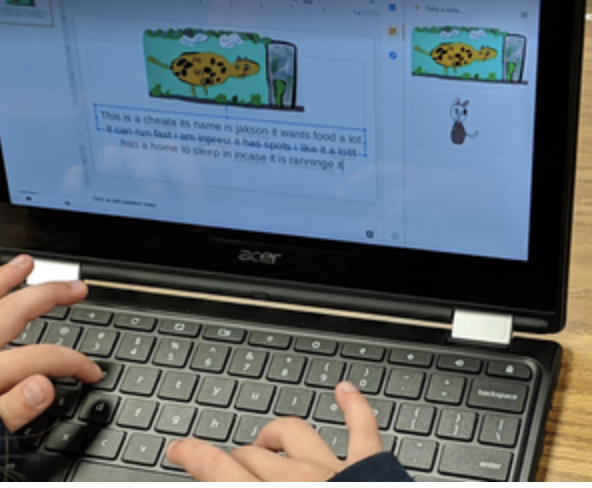
Students and adults alike often struggle to begin the writing process. A blank page in a notebook, the blinking cursor at the top of a digital document… For some, these images increase anxiety and cause any creative juices to dissipate from the mind, rendering it a useless white space. And yet, in order to become a writer, one must write. I had the great pleasure of attending a keynote speech by high school English Language Arts teacher and author Kelly Gallagher, who spoke to the importance of increasing the volume of what our students write.

Writing as a Daily Process
As an elementary classroom teacher, my students produced writing on a daily basis. When I taught young students, it was not difficult to take the time to read through each student’s compositions. In each grade level I taught, students would begin the year struggling to begin and then sustain the act of writing for longer than a few minutes. I would continue to urge students to write throughout a block of time, to persevere through the process of writing itself, rather than to judge themselves on their idea before having begun. Many students and adults are nervous to begin to put pen on paper or type those first few words on a digital document because they focus on writing as a product rather than as a process. They do not want to begin until the overall text has all been planned out in their heads. Well-meaning teachers may require students to fill in an extensive graphic organizer before allowing them to begin to write. Pre-planning can be valuable, but if we overemphasize pre-writing it can send the wrong message. Students do need opportunities to plan, organize, and then write. But they also need daily practice writing on demand. I have been in schools that do not EVER allow students to write on demand, whether on a device or on a piece of paper.
Writing as Generative
For me, writing is not merely a reflective process, it is also generative. I began blogging to document reflections and learnings. In this process, I have learned that it is the very act of writing itself that often leads to the creations of new ideas and iterations. We must teach our students that writing is not meant to be done only when we have all the answers, but also as a way to learn. It is often said that students first learn to read and then read to learn. I would argue that even when young students are learning to read, they are actively learning. Similarly, we learn to write by writing to learn.

Writing itself sparks learning. When I became a sixth grade teacher, students produced, on average, a full page of writing each day of the week. This was in addition to short response and essay based questions on weekly standards based assessments. I wanted to provide timely, descriptive feedback for each piece of writing produced, but this became nearly impossible as the volume of writing kept increasing. I did not abandon the daily writing practice for students because of this limitation. Rather, I opted to provide descriptive, timely feedback on one random selection of student writing per week. Kelly Gallagher allows time for daily writing for his high school students, and asks them to select one excerpt they want him to provide feedback on.
Addressing: “I Don’t Know What to Write!”
In future blogposts, I will share ideas we have used in classrooms to prompt writing for students that struggle to begin. The gist of the first upcoming blogpost will be: spark creativity through imagination.

Stay tuned for these upcoming posts which will include methods to use animated gifs, real life objects, student created visual art, and computer science activities to prompt narrative, informative, and argumentative writing.
